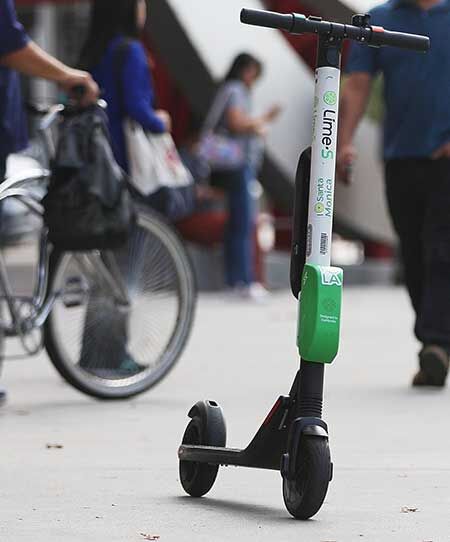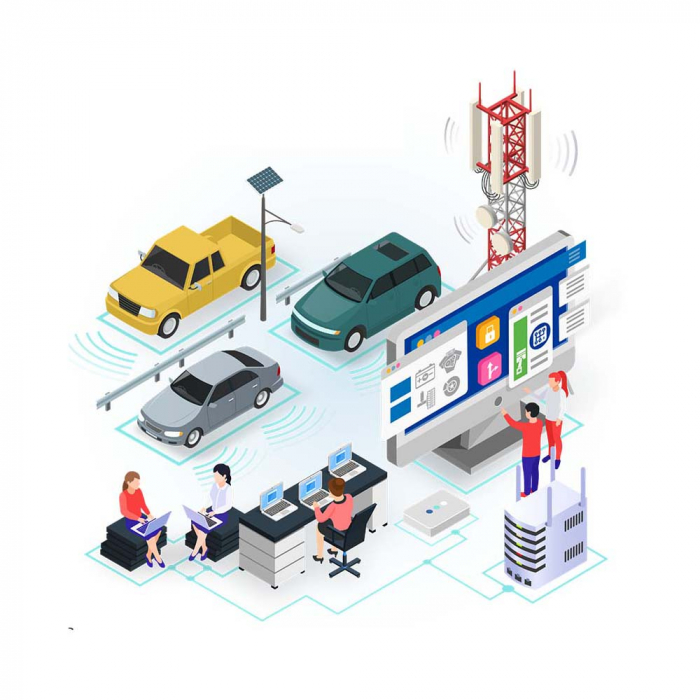Dockless micro-mobility (whether its e-scooters or other short-distance shared vehicles, such as bikes) utilizes GPS technology and other smart features powered by the Internet of Things (IoT). Riders locate and reserve available transportation in their area and activate it using a smartphone app. As the rider uses the vehicle, the app calculates time and distance to determine how much the ride costs and charges the customer upon completion of the ride. IoT connectivity also allows micro-mobility companies to gather valuable data on commuting trends in each city where they provide service, which has numerous potential applications in city planning and transit improvement.
Micro-mobility is seen as an eco-friendly, cost-effective answer to traffic congestion in large urban areas. According to the INRIX Traffic Scorecard, the average American spent nearly 50 hours in traffic in 2015. The National Household Travel Survey (NHTS) reports that 46 percent of vehicle trips in the United States are less than three miles. By providing an alternative solution to these short trips, micro-mobility has the potential to significantly reduce traffic congestion in urban areas.
Troubleshooting Safety Concerns
Despite its potential impact on vehicle congestion, micro-mobility expansionparticularly the e-scooter, by far the most popular micro-mobility optionhas presented some concerns regarding safety. A report from the City of Austin discovered that roughly 20 individuals were injured for every 100,000 e-scooter trips taken during a three month period in 2018. Of these injuries, the majority were suffered by individuals who had no previous experience with e-scooters. The response from micro-mobility companies has been to introduce more information and safety training videos so that new riders have a better understanding of proper e-scooter use.
Micro-mobility companies are also working with municipalities to implement geofencing parameters for e-scooters that enforce good habits, such as prohibiting e-scooters from operating outside of bike lanes or being dumped in the middle of a sidewalk. As urban commuters become more familiar with e-scooters and municipalities devise safety mandates for both riders and micro-mobility companies to follow, the issues with congestion and number of injuries will likely decrease.
The Key to Micro-Mobility Longevity is Integration
In order for micro-mobility to become a long-term viable solution for short trips in urban areas, it must become a seamless part of a citys Mobility as a Service (MaaS) infrastructure. One option for better integration is to offer payment services that can be used across mobility platforms. For example, Taiwans EasyCard can be used to pay for any mass transit ride, from trains to buses to docked bicycles, and is also accepted at many convenience stores and supermarkets. Grab, the Singapore-based ride share company that has expanded to multiple MaaS options, has seen success with its GrabPay digital wallet, which allows customers to pay for rides, food delivery, store purchases, and other services.

Define Your Micro-Mobility Solution with Aeris
The interest in micro-mobility in urban areas has illustrated the demand for a solution to traffic congestion. Whether a traffic congestion solution takes the form of e-scooters, dockless bikes, or a combination of several micro-mobility options, commuters are eager for a service that offers seamless integration with their daily lives. In order to manage an effective e-scooter or dockless bike deployment, micro-mobility companies require a versatile, scalable IoT solution that collects data in real-time.
At Aeris, we offer future-proven IoT connectivity for micro-mobility management, globally tested at scale for cost, compliance, and safety. The Aeris Mobility Platform (AMP) provides the technical and functional building blocks required to expand connected service offerings across any network for any application, all of which can be managed through an easy-to-use management platform.
To learn more about how IoT connectivity makes Micro-mobility as a Service (MMaaS) a reality, contact Aeris today.



